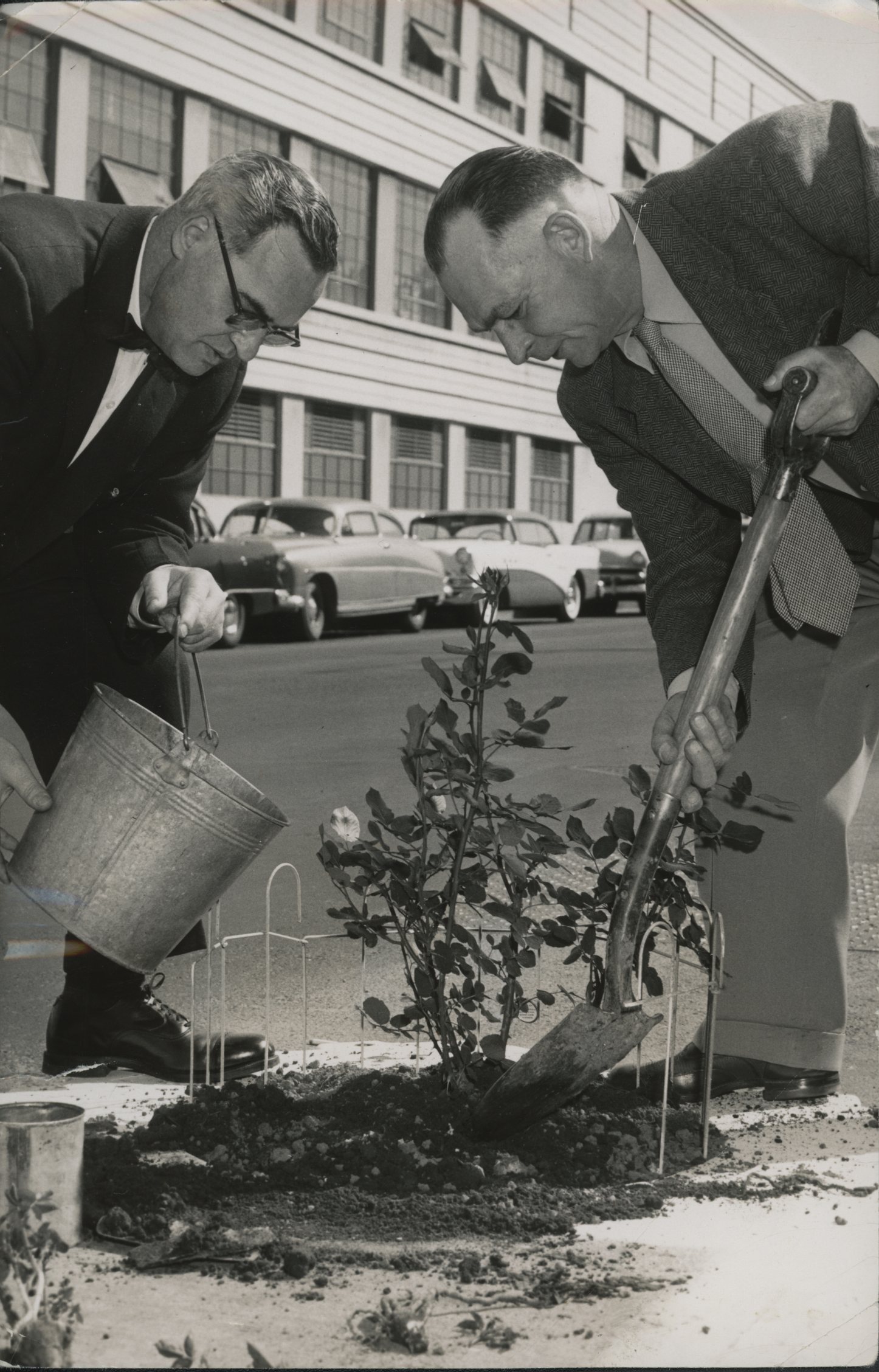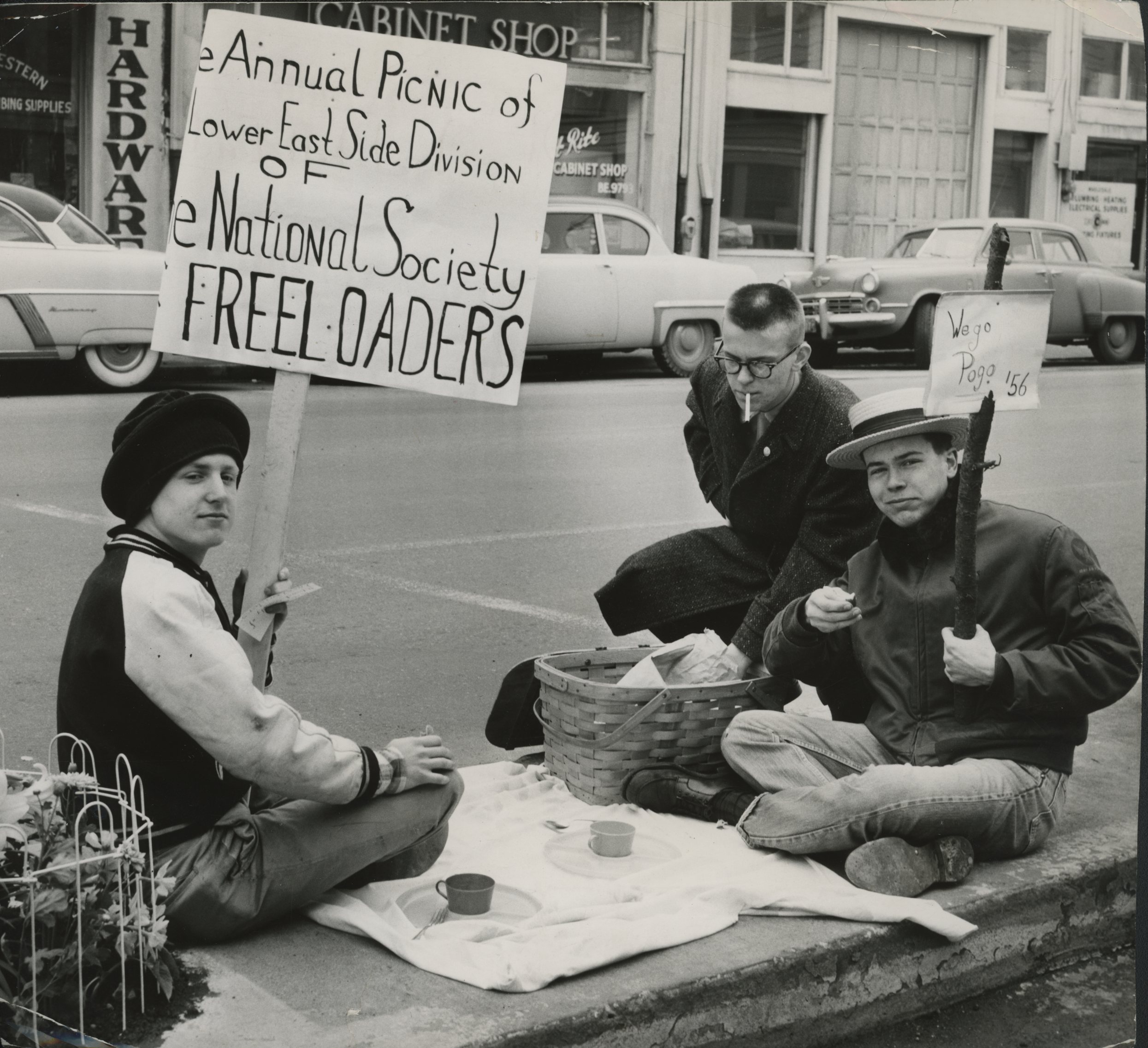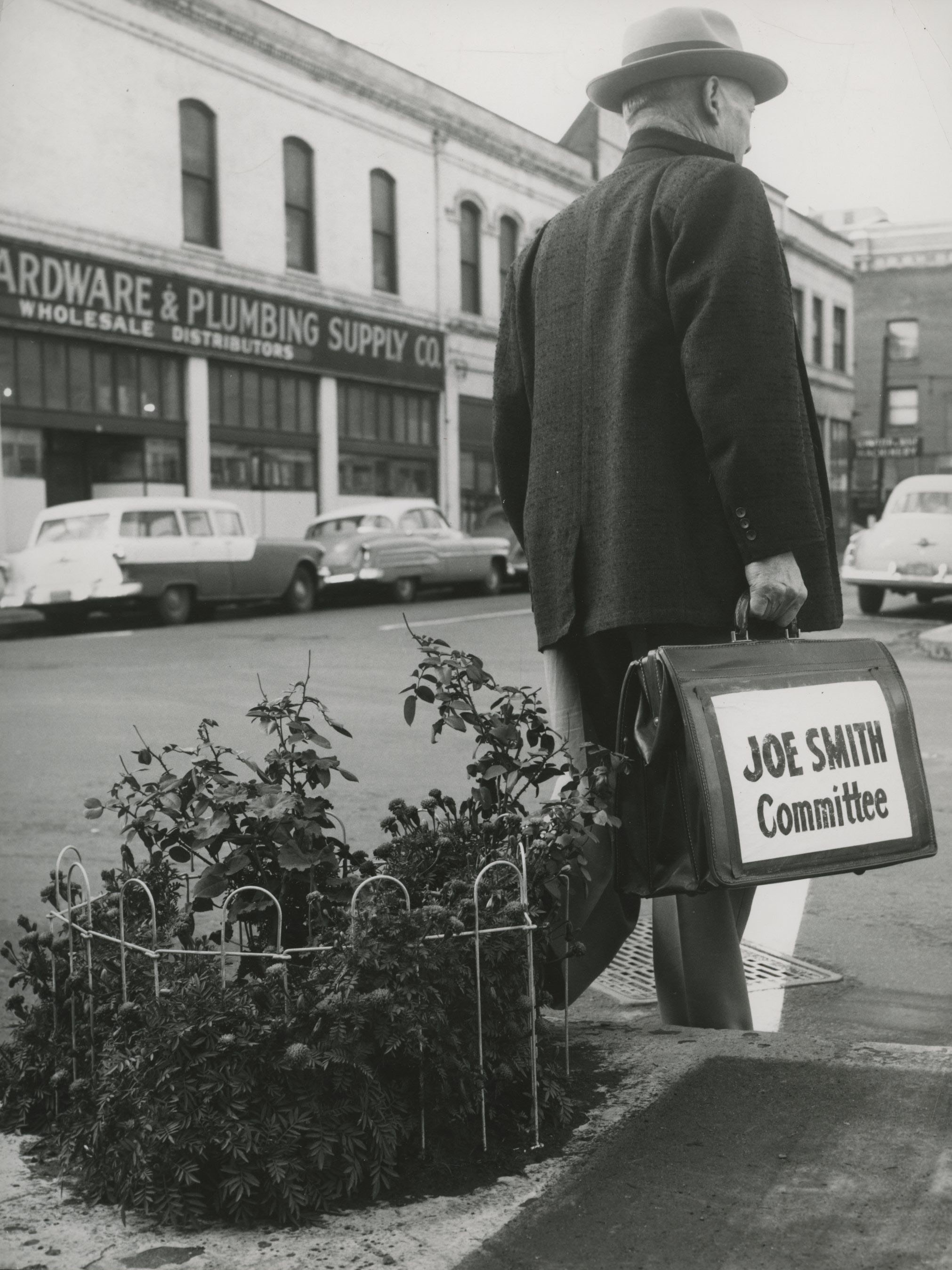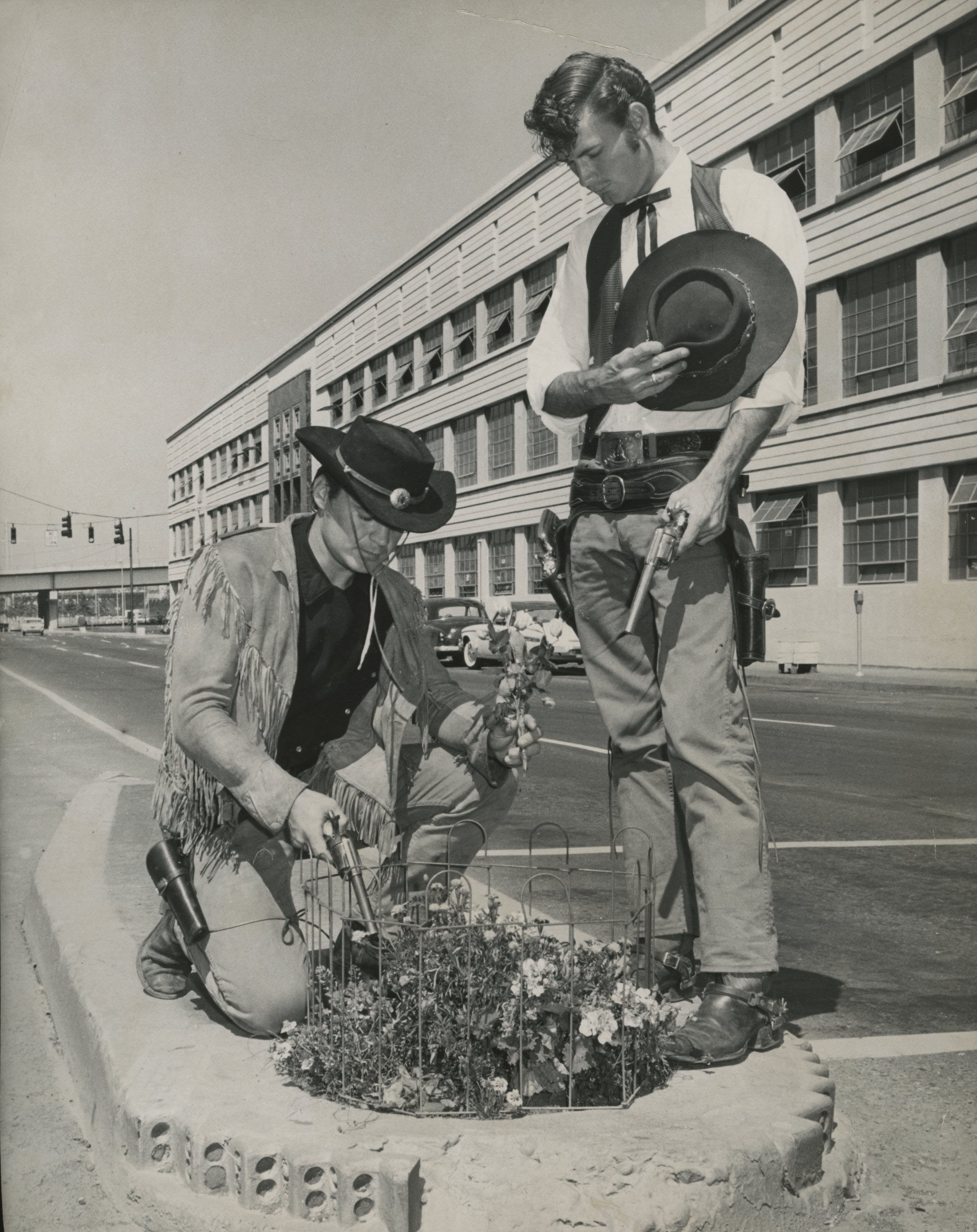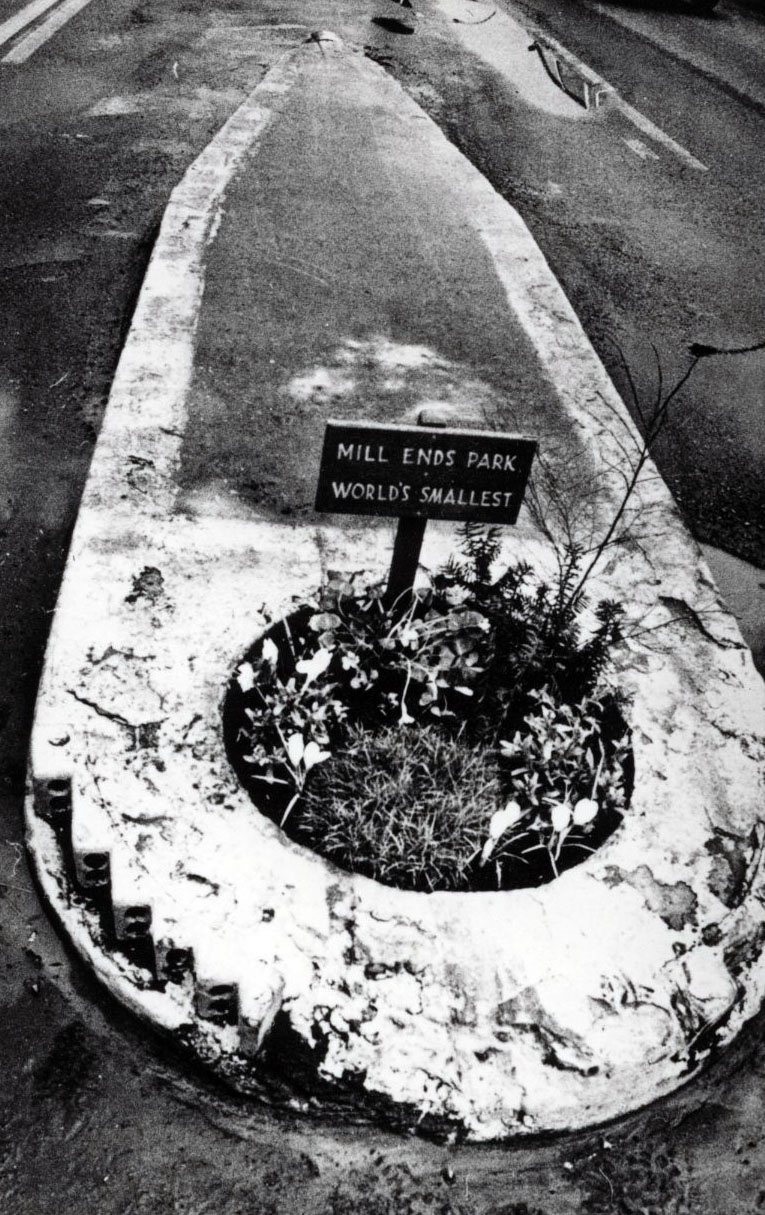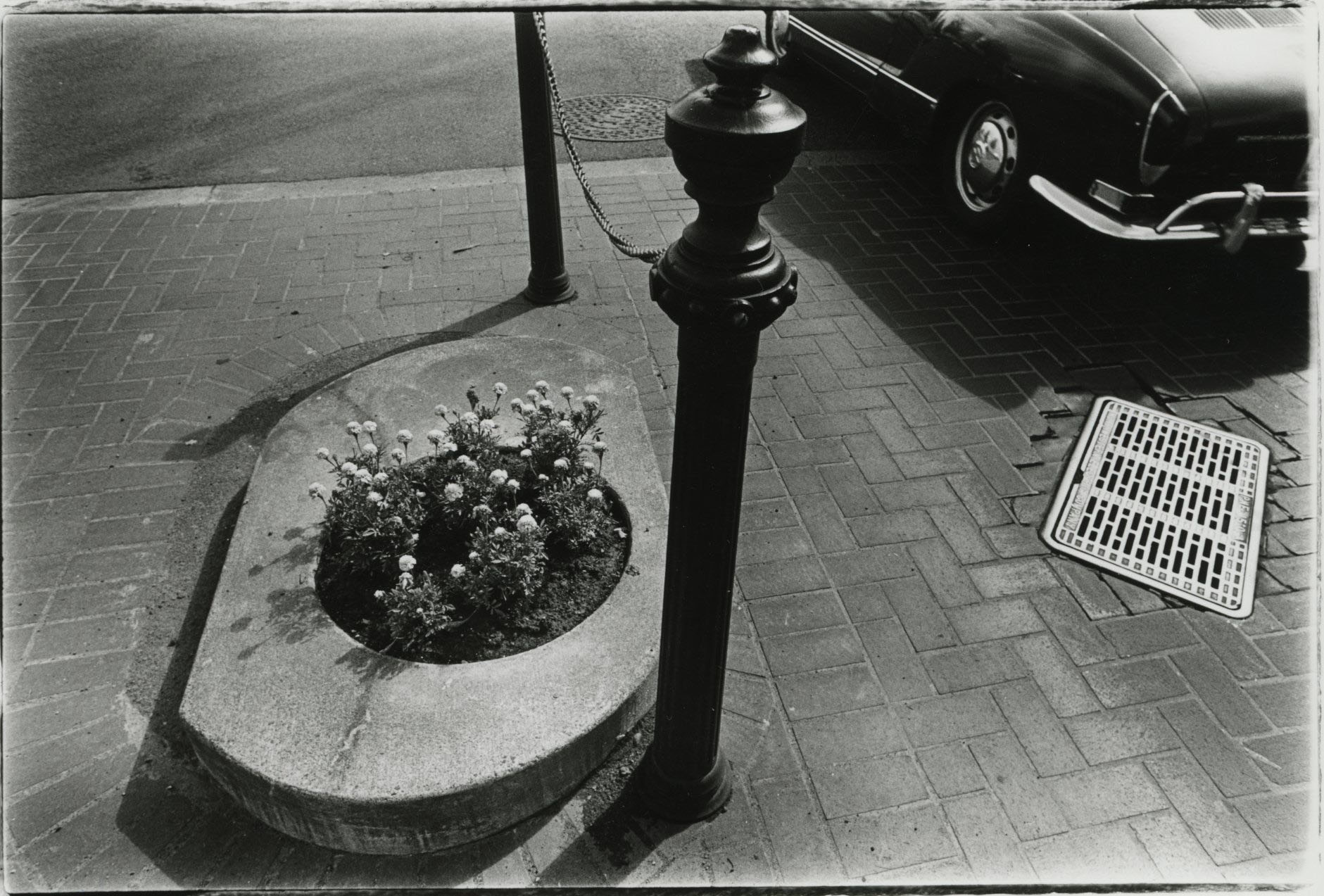The world's smallest park, the Guinness Book of World Records claims, is located in Portland at the intersection of Southwest Naito Parkway and Taylor Street, near the Willamette River. Finding the park may be difficult, since it is disguised as a traffic circle on a median in the middle of the parkway.
Mill Ends Park was the creation of Dick Fagan, a columnist for the Oregon Journal, who wrote a column called “Mill Ends,” a loggers’ term that refers to pieces of wood left over from the milling process. In his column, Fagan wrote about whatever he observed that caught his fancy.
In 1946, Fagan watched from his office window as a traffic median was being constructed on Front Avenue (now Naito Parkway). One raised concrete bed had a hole in the middle for a traffic light. The median was eventually finished, but the traffic light was never installed, leaving a hole in the concrete that was soon filled with weeds and trash.
One day, as Fagan told the story, he looked out his window and saw a leprechaun digging in the hole. Fagan ran downstairs, dashed across the street, and caught the leprechaun. According to Irish lore, if you catch a leprechaun, he has to grant you a wish. Fagan wished for his own park, but he never specified where or how big the park should be. The leprechaun granted his wish and gave Fagan the hole in the traffic median as his own personal park. Fagan named the spot after his column.
Having his own park meant that Fagan now had the responsibility for maintaining it. He planted flowers in the hole, and he wrote about the resident family of leprechauns and their adventures in and around the park. The leader of the clan, he wrote, was Patrick O’Toole, who reportedly informed Fagan that Mill Ends Park hosted the only leprechaun colony west of Ireland.
Fagan’s columns about the park captured Portlanders’ imaginations. Soon other things began sprouting there besides flowers. A swimming pool magically appeared, complete with a diving board for butterflies. A miniature Ferris wheel was delivered by a full-sized crane. It became a focal point for St. Patrick’s Day festivities in the city.
Dick Fagan died in 1969; the Oregon Journal ceased publication in 1982; but Mill Ends Park lived on. Named an official city park in 1976, it has been the site of bagpipe concerts, picnics, and demonstrations. The Junior Rose Festival Court planted rose bushes in the hole.
Mill Ends Park remained in the traffic median until February 2006, when construction began on Naito Parkway. The city relocated the park to a planter outside the World Trade Center, where it remained for a month until it was restored to its original location on March 16, 2007, with great fanfare and the skirl of bagpipes. The Fagan family—accompanied by the Royal Rosarians, Portland’s official ambassadors—was in attendance. It is hoped that the leprechauns were not inconvenienced.
Mill Ends Park was removed again in 2021 to make way for the Portland Bureau of Transportation's Better Naito Forever Project, designed to provide safer conditions for cyclists and pedestrians and better access to the world's smallest park. The park was reinstated just six inches from its original location in January 2022.
-
![]()
Dick Fagan tends to Mill Ends Park.
Courtesy Oregon Hist. Soc. Research Lib., 022795
-
![]()
Commissioner Stanley Earl and Leo Faust, president of the Portland Rose Society, plant a rose for the 1955 Rose Festival.
Courtesy Oregon Hist. Soc. Research Lib., photo file 1890
-
![]()
Grant High School students picnic at Mill Ends, 1956.
Courtesy Oregon Hist. Soc. Research Lib., photo file 1890
-
![]()
Mill Ends Park, 1956.
Courtesy Oregon Hist. Soc. Research Lib., photo file 1890
-
![]()
Two men plant the Yellow Rose of Texas in Mill Ends using a Colt 45 to blast the dirt, 1960.
Courtesy Oregon Hist. Soc. Research Lib., photo file 1890
-
![]()
Mill Ends Park, 1976.
Courtesy Oregon Hist. Soc. Research Lib., 020119
-
![]()
Mill Ends Park, c. 1980.
Courtesy Oregon Hist. Soc. Research Lib., photo file 1890
Map This on the Oregon History WayFinder
The Oregon History Wayfinder is an interactive map that identifies significant places, people, and events in Oregon history.
Further Reading
"Stumptown Stumper." The Portland Tribune, August 25, 2006.




